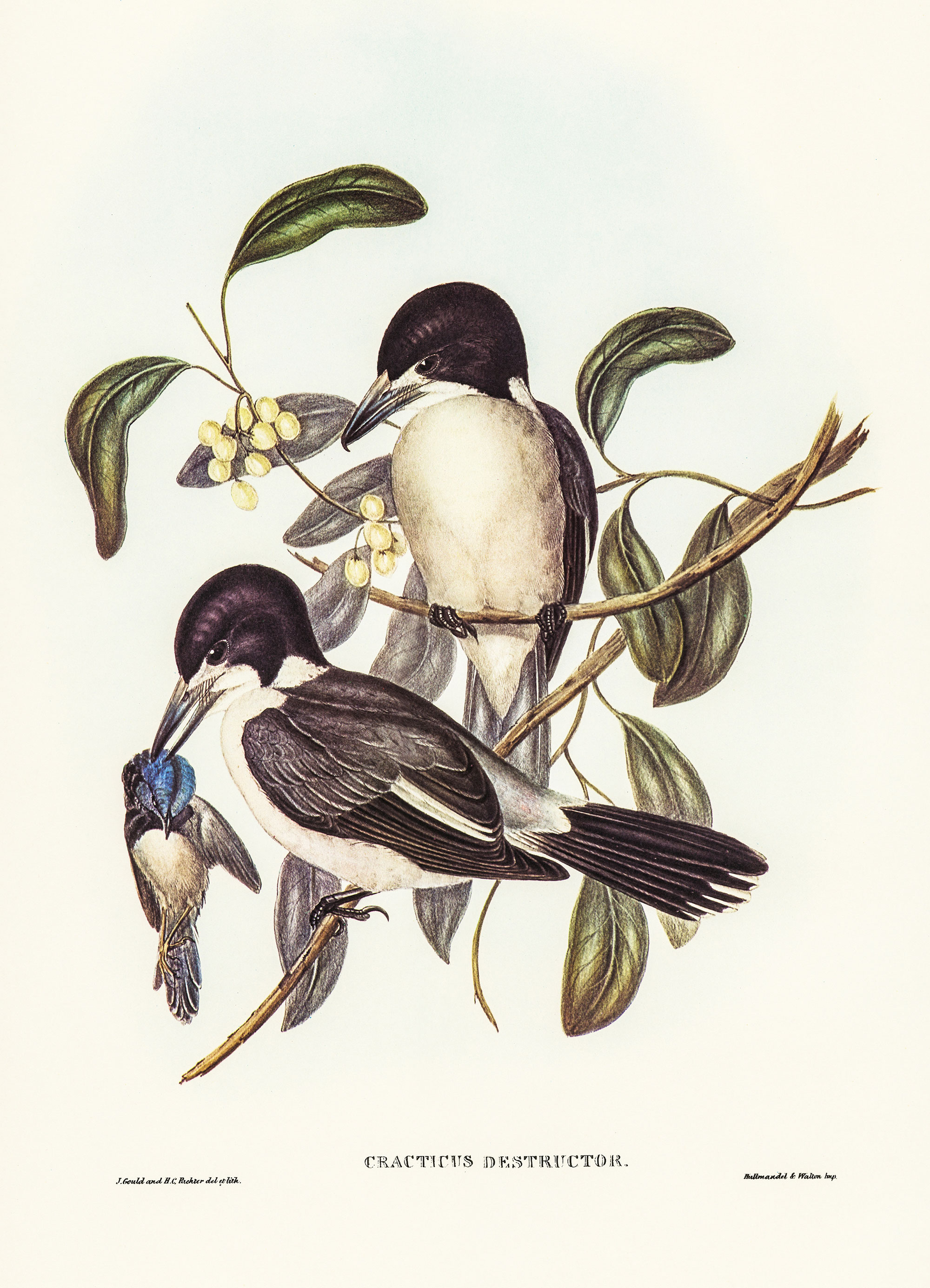
Avian mimicry is stunning: suddenly, a low-and-slow bird-musician is singing falsetto, like an individual half their size—chips and chirps, barks and squeaks, swift arabesques, next gurgling, and now metallic-sounding. The inter-phrase interval disappears, and the singing is nearly nonstop. You could call it a DJ cut- and-paste session. Or a one-man band.
Butcherbird mimicry often takes place quietly around midday in the shade of a tree and may last for forty-five minutes or more. Although butcherbirds excel at high-fidelity duplication, they may not copy an entire motif. In addition to copying other birds, they include anthropogenic sounds in their repertoire, like mobile phone ringtones, car alarms and sirens. The sound treasures these mimics round up may also include the whinny of a horse, but inevitably some material remains unidentified.
But why mimic? Is it an audio diary, a census, a dream state or even a musical joke? Biologists have yet to come to grips with the function of avian mimicry or even to posit an overarching hypothesis. This allows artists like me to frame their own questions and hunches on mimicry, traversing this undefended territory much as an opportunistic bird might.
Listen how this bird suddenly abandons formal song with a memory bank of readymades.
[Avian musical interlude]
Planet Earth has hosted some thirteen million years of culture from these singing dinosaurs. They were learning, refining and transforming their complex phrases well before we had theories about them. It’s high time for the old, tired binaries to unravel and for us all to accept that birds were, and remain, our First Musicians.
If you're fortunate you may encounter a butcherbird in the museum cafe.

